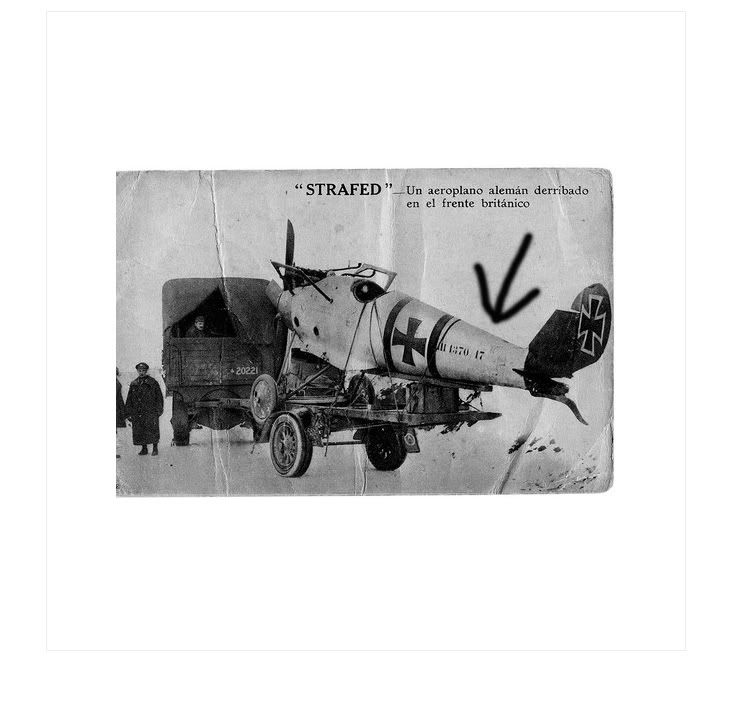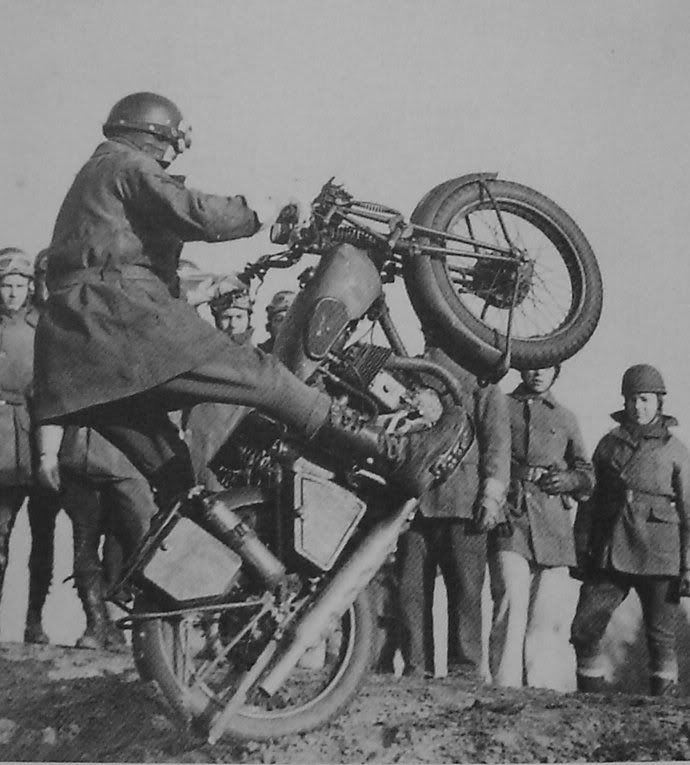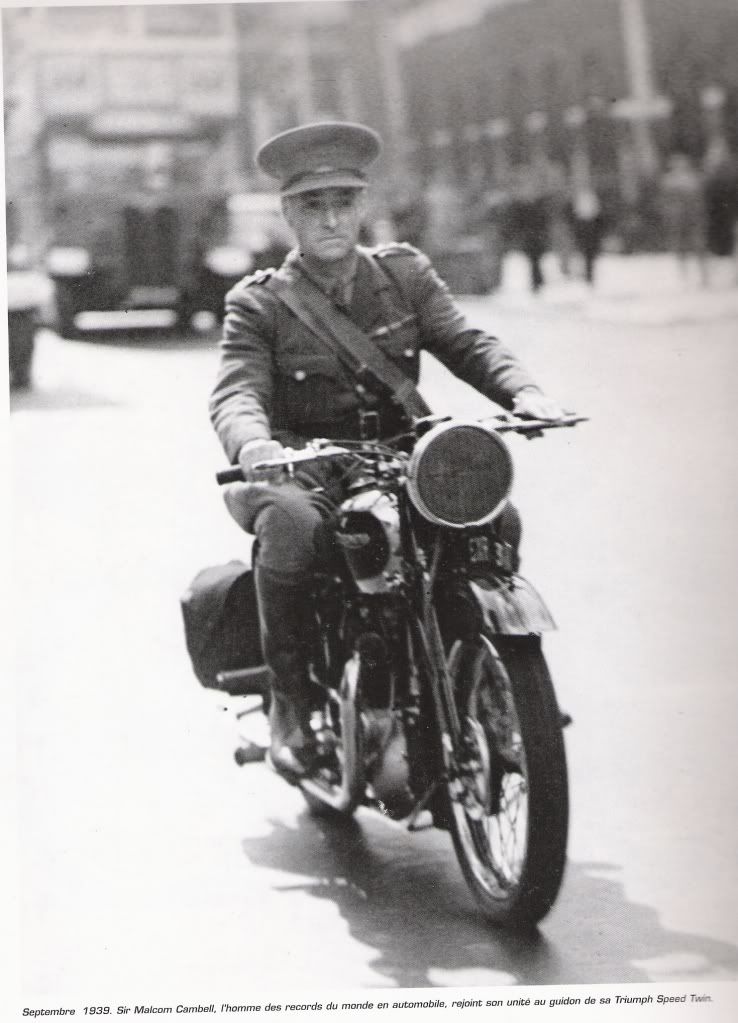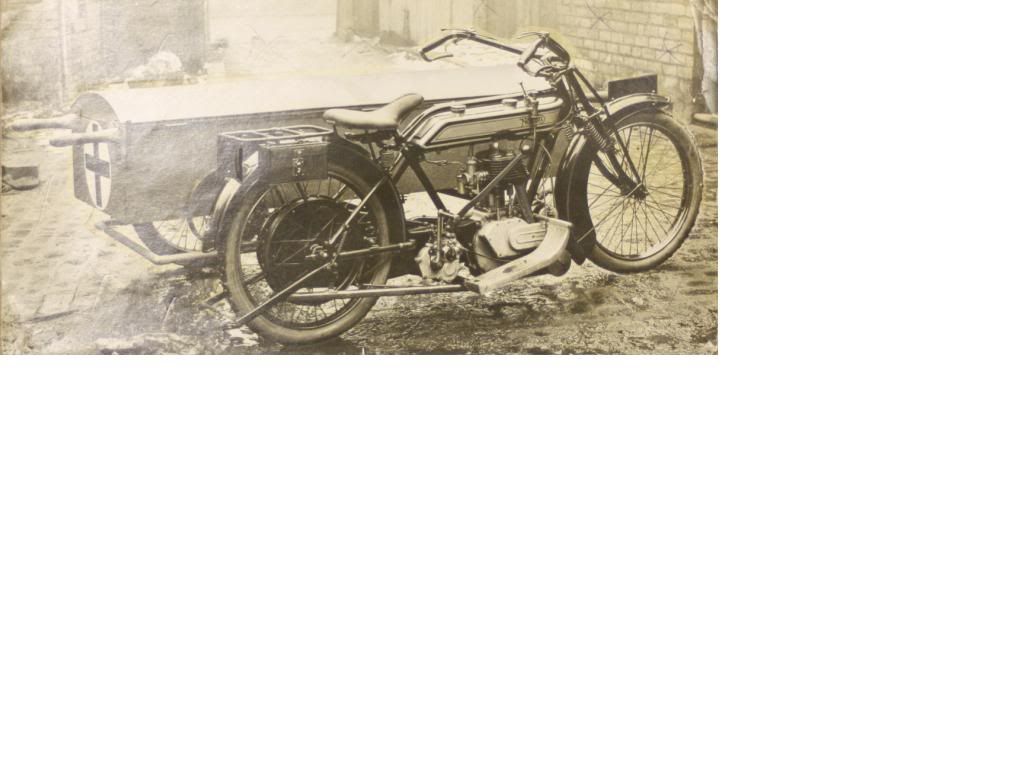-
Posts
1,024 -
Joined
-
Last visited
-
Days Won
6
Content Type
Profiles
Forums
Gallery
Blogs
Events
Articles
Store
Downloads
Posts posted by 79x100
-
-
Where would you sugest getting a new magneto, dynamo etc from? There is a reconditioned Magneto for sale on ebay ending in just over a day at £180, is that fair? What sort of prices would i be expecting to pay
You really need to get the right type, correct mountings, direction of rotation etc. There is also a great difference between 'reconditioned' magnetos.
I'd suggest a post on the WM20 forum. Ian Wright at Ark Motorcycles who is a regular there can usually supply M20-correct items and is very fair to deal with.
-
Your charging system wiring is a complete mess. In my opinion, your best move would be to remove it and start again. The wiring on these bikes is pretty simple (although that said, yours has been made unnecessarily complicated by the fitting of electronic ignition instead of the self-contained magneto).
Your Dyno-Tec regulator is the type supplied by Sean Hawker. They're a good product and simply replace the standard regulator connections. The 'F' and 'D' referred to on the box are the dynamo connections. You'll need to remove the non-standard cover to see what's going on inside your dynamo.
The electronic ignition appears to be based on an old Boyer-Bransden backplate and pickups. These are OK (and were considered top-notch thirty years ago) but they are extremely sensitive to battery condition. You probably have a 12v conversion in order to run the Boyer. You won't get anything out of it without a fully charged battery in good condition.
The components that you're looking at are the old manual advance/retard cable connections which probably no longer apply as the Boyer is likely to have an electronic advance curve programmed in. Somewhere you'll have a black Boyer contol box (about the size of a cigarette packet) and this will need a live feed plus two wires from the pick-up in the magneto housing. There will also be a connection to an ignition coil which is probably tucked under the fuel tank and the HT lead will run from there.
You're not going to find a standard wiring diagram that takes account of these mods. My inclination would be to put a properly reconditioned magneto back on and then wire the bike as original (but with stop and dip lamp functions).
A phone call to Sean Hawker might not be a bad idea. He's a helpful chap (but the language can be a bit strong).
-
It's a fine looking machine Ron, and you've made a damned good job of it, as usual. I'm really glad that it ended up in your hands. it must be the sole properly restored survivor.
I wonder what they're like to ride ?
-
Ron's absolutely right of course. A WD motorcycle is far and away the most useable of wartime vehicles, probably more so than the civilian equivalent and an ideal way of combining two interests.
Is it this bike that you're looking at ?
http://www.preloved.co.uk/adverts/show/106410187/ajs-16m-1948.html
I wouldn't consider it 95% complete at all and parts like the mudguards don't look useable. The big lumps like engine, frame and fuel tank are easily found for post-war bikes but the parts missing here are where the expense will be and what you get will be knackered. I wouldn't take on one as incomplete as this for a first restoration. You should be able to find a complete good runner for less than £3000 (and believe me, this one will take a lot more than £1000 to make anything more than an unreliable field bike out of it).
For some reason, post-war AMC singles are a bit undervalued. A good one is a nice bike though. Parts availability is pretty good for a sixty year old vehicle but don't go thinking that you can find all the right tinware for each model year direct on the shelves. Autojumbles will become a way of life.
-
Thanks for the GWF link. Looking further, this one is not the same aircraft on the trailer but is the 1370 17 referred to in the thread as being brought down during December 1917, which makes sense bearing in mind the greatcoat visible in the background.
I find it interesting that postcards of scenes like this were produced for sale as far away as neutral Spain.
If you're a member of GWF, feel free to post the image on the thread. I only pinched it from eBay anayway....
-
This post card appeared on eBay recently. Is there any significance in the spanish caption ?

-
I like that silencer Ron. Art-deco meets Ministry of Supply. I think that I'm going to have to put a Brooklands can on the 16H.
-
Not the same occasion but possibly an earlier photo of the same chap at the same location. The bike looks a little newer and displays both a conventional and pannier type tool box which don't ever appear to have been officially fitted together. He's probably got a fire blanket in there.

-
These 'Movement Serials' date back to the beginning of the war (at least) and were certainly used by the BEF. In some cases, the serials remained unchanged from 1939 - 1944. They are obscurely referred to in a number of official documents. There were ten colours allocated, each one denoting a particular cipher (0 - 9 incl).
In addition to the painting of the full movement code, for easy visual identification the last two digits (the tens and units) were displayed as three coloured bands - the colour for the tens, followed by the colour for the units and then the tens again. These colours were also applied to baggage and presumably the use of the same colour top and bottom was to allow them to be the same even if viewed upside down.
-
It's clear from the number of 3HWs surviving in the Far East that large numbers were sent there and it seems to have been one of the types that was being stockpiled for the war against Japan. It had been expected that the defeat of Japan could require another two years so the manufacture of equipment was not stopped immediately.
The Ordnance record card for this contract states :-
"Vehicles still remaining undelivered to be made suitable for the Tropics - 26/3/45"
"50 Tropicized" - Is that a word ?
"All to be produced less tyres and batteries until further notice. DLO 242" - Unfortunately undated but suggesting that long-term storage was envisaged.
"Break Clause - Contract complete at 5200"
Production was originally scheduled for 1200 per month commencing January 1945 which would have meant that it was completed by July or August but it would seem that deliveries were delayed.
Have you checked with the VMCC to see if the Triumph factory ledgers include further information ?
-
Jiri Horice at Vintage Replica makes repros of a number of the spring steel type. He had them on his stand at Netley Marsh and they're indistinguishable from OE (although they will need black enamelling).
http://www.vintage-replica.cz/294.E.htm
Early-war Nortons had quite a lot of these and in the few places where there wasn't one suitable, they appear to have used black cloth tape.
-
If the Jeep in question left British service prior to 1948 or so then it won't appear in the post-war 'Key Cards' that the RLC Museum refer to as the B vehicle cards. These records were compiled at the point that the new post-war registrations were issued and would have been the tidying up of what remained on strength after wartime losses and the early disposals.
As far as is known, there are no systematic records of British wartime vehicle allocations. If you know the area that the Jeep was found in then you can check war diaries for British units that were in the locality. Some of these diaries include a list of vehicles either by chassis or census number but it's a very small chance and you'd need to check a lot of diaries, including Ordnance, RASC, REME, Provost and Div HQ etc. If you can't get to the records office in Kew then it will cost a fortune with only a tiny chance of success.
-
Unfortunately, Amazon.de appear to have sold out and don't know when it will be available again. Tankograd's site doesn't give any clue to postage costs for a book of this size.
-
Personal Liability insurance for yourself and your family should be included under your household contents policy, subject to any policy exclusions which often relate to the US etc. They wouldn't normally exclude sitting on a deck chair beside an old vehicle any more than they'd exclude sitting on the beach on one.
-
All of the Triumph production records were lost in the bombing so there are no details of any pre- or early-war production.
This looks like a Triumph twin parked outside the Officers' Café. I think that it's once again a 2nd BEF / Cherbourg area photograph.

You're right, Ron. They do look nice in red. (photo pinched from Patrick Negro's 'Motos Militaires') It would seem to be Campbell's personal machine.

-
Go for a Norton, Jack, the machine that the MEE chose for the army before the exigencies of war forced lesser makes upon them....

-
If the chassis is from 1939 and the doors from 1944 then the inference is that they didn't start out together. Vehicles were sold off, often in batches to dealers at post-war sales and then civilianised by them. Perhaps one of the dealers bought an early car with damaged doors and a late model, perhaps with front end damage ?
If the vehicle is made up from parts with widely different dates then it should be possible to see that from the colours. 1939 bodywork will be Khaki Green No.3 and a 1944 build probably British Olive Drab (unless it was still in the even more visibly different SCC No.2 Brown used in between).
If you can post some photographs of the flatted-back panels then I think that confirmation of the shade should be possible.
-
It is generally thought that Nortons, who were a small factory at the time, did not supply any WD contracts, although a few Imperial Russian Models did make it there before the order was cancelled.
However, this photograph dated March 1916 implies that some at least were being used for the war effort. It is captioned as Norton Watsonian Motorycle Ambulance.

-
Second-hand copies of Orchard & Madden's "Bible" are available on Abebooks for less than £20. If you regard that as expensive, then I don't think that you should be considering the purchase and restoration of any old vehicle. They're money-pits and motorcycles are no exception if you want to do it properly.
Any restoration should start with thorough research and useful as they are, internet forums are no substitute for the better published literature.
-
C10477 is indeed a contract for which only incomplete records survive. The RAOC Chilwell records include the comment "Probably 422 for RAF Depots - See letter 11/8/1941" - I can't imagine that army clerks enjoyed writing the word 'probably' in their files !
RAOC records indicate that they definitely took their full 1500 so the RAF (and RN ?) machines must have come from the original RASC entitlement. The RAOC bikes were delivered between 11/10/1941 and 19/12/1941. Would this imply that the RAF machines referred to in the August 1941 letter were delivered first ? Unfortunately, there is no link made between census numbers and frame numbers delivered.
Bearing in mind that DME circular B.273 instructing 'Fitting pannnier bags and pillion seat conversion sets' to Ariel M/C dated 12/6/1942 came under the heading 'Immediate Action', then it would seem that all W/NGs in service should have been fitted with panniers. That XG21380 wasn't might just indicate that it was an RAF machine as photographs of RAF Ariels show that they don't seem to have been subject to the retro-fitment of pannier sets.
-
Good Man !
Did it turn up in België ?
-
I hope that you're going to get rid of that Honda rear light !
-
I'm a little outside this debate as I'm in Belgium where, rather strangely they have never had an MOT for motorcycles (which is my main area of interest). This seems to stem from the fact that they have never prepared proper (in their eyes) Type Approval characteristics for motorcycles and the argument is that they can't test accurately if they don't have the original parameters (a commonsense test is out of the question in this land of official testing centres where two to three hour queues are not uncommon).
If I look around the old bike scene here, I would say that there are more bodged heaps than amongst enthusiasts in the UK. I'm not sure whether this relates to national character or the discipline of the MOT test. I still do my annual partial dismantling safety check, as I did in the UK but I suspect that I'm unsual.
The question is whether these heaps cause more accidents and I'm not sure that they do. They may have leaky suspension units and brake arms in the wrong position but they are probably ridden accordingly. They are not involved in the cut and thrust of the weekday commute.
My main doubts about whether the MOT was truly relevant for older vehicles is the state of the machinery that some dealers sell with a 12 months certificate, chains hanging off, frayed brake cables, bent forks, the lot. It has been patently obvious for years that those who wish to circumvent roadworthiness have been able to do so. WD motorcycles are among the worst offenders as many buyers and owners appear to be blinded by a coat of khaki paint over everything.
-
As Ron has said, your frame is from the last 'cut short' contract. All the major manufacturers had one of those, presumably because the war in the Far East ended sooner than expected.
Ordnance records show that delivery was scheduled for 1200 machines per month commencing January 1945.
The majority of late 3HWs seem to have found their way to India. The records include the following comments :-
"Vehicles still remaining undeliverd to be made suitable for the tropics" 26/3/45
"All to be produced less tyres and batteries until further notice".
The reference to the tropics probably indicates Vokes filter fitment and the tyres aspect may indicate expected long-term storage or perhaps that rubber and lead were short in the UK but more easily available in theatre.



.thumb.jpg.8638c1c2349aab3213f0d167c381528f.jpg)
1940 bsa m20
in Blogs of MV restorations
Posted
I'm not a BSA man, but that one will probably fit. It is however a post-war body (with the open area under the dynamo rather than a full support as per earlier production).
I'd want to see a photo of the underside as they can wear badly if run with the retaining strap loose and condensors do fail with age, even if unused so it's not ideal to have one built up some time ago.